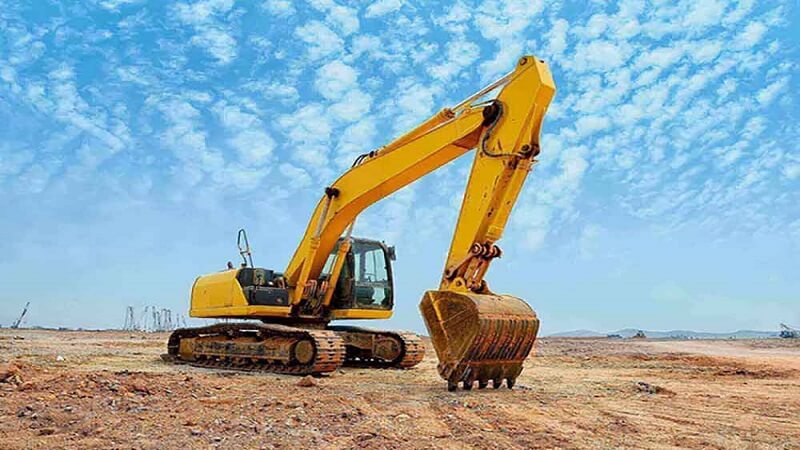Construction projects rely on diverse tools and machinery to get the job done efficiently. From towering cranes to sturdy excavators, each piece of equipment has a specific role in contributing to the project’s success. Understanding these machines not only ensures proper use but also optimizes productivity. Here’s an overview of essential construction site equipment and its importance.
Excavators: The Digging Experts
Excavators are one of the most versatile machines on any construction site. With their large, extendable arms and various attachments, they excel in digging trenches, holes, and foundations. They are also used for demolition, material handling, and even mining.
What makes excavators invaluable is their customizable design. Attachments like buckets, drills, and grapples allow operators to adapt the machine to different tasks. This flexibility reduces the need for multiple machines, saving time and money.
Types of Excavators
Excavators come in several forms, tailored to unique job requirements. Mini excavators are ideal for smaller, more confined sites, while crawler excavators handle heavy-duty work thanks to their robust tracks. Choosing the right excavator depends on the size and complexity of the project.
Bulldozers: Masters of Earthmoving
Bulldozers are the heavyweights of earthmoving. Known for their powerful blades, they easily push large volumes of soil, sand, and debris. Whether leveling ground or clearing land, bulldozers make foundational work more efficient.
With advanced traction systems, bulldozers are perfect for traversing rough terrain. Some models are equipped with rippers, enabling them to break down tough materials like rock or asphalt.
Applications of Bulldozers
Bulldozers see widespread use in everything from road construction to mining. These machines are indispensable for projects requiring extensive grading or removing dense materials.
Cranes: Elevating the Heavy Lifting Game
When it comes to lifting and transporting heavy loads, cranes are the centerpiece of construction sites. These machines extend vertically and horizontally, enabling them to move materials to considerable heights or distances.
Cranes vary greatly in size and purpose. Some are ideal for smaller job sites, while tower cranes dominate large-scale construction projects like skyscrapers. Their ability to handle extreme loads makes cranes a symbol of modern construction.
For those seeking specialized equipment, options like a Potain crane for sale in Utah provide efficient solutions tailored to specific project needs. Whether erecting steel frames or moving concrete slabs, cranes streamline the building process.
Common Types of Cranes
- Tower Cranes: These tall and stable machines are staples of urban construction projects. They are ideal for building high-rise structures.
- Mobile Cranes: Offering flexibility, mobile cranes are mounted on trucks or crawler tracks. They transport materials across varying job sites.
- Overhead Cranes: Often used in warehouses and factories, these cranes lift materials along fixed paths.
Selecting the right crane depends on load requirements, site restrictions, and project timelines.
Backhoes: Dual-Purpose Workhorses
Backhoes combine the functions of a loader and an excavator, making them a versatile choice for smaller construction tasks. The front of the machine is equipped with a large bucket, suitable for loading materials or grading land. You’ll find a hoe attachment for digging or trenching at the back.
Due to their compact size and adaptability, backhoes are a favorite for utility work, small-scale construction projects, and landscaping. They may lack the power of bigger machines, but make up for it with multitasking capabilities.
Compactors and Rollers: Ensuring a Solid Foundation
No construction site can overlook the importance of a stable base. Compactors, such as smooth rollers and vibratory plates, condense soil and asphalt to eliminate air pockets. This step ensures the foundation is sturdy, reducing the risk of structural failure.
Types of Compactors
- Smooth-wheeled rollers are ideal for flattening paved surfaces like roads.
- Padfoot Rollers excel in compacting clay-based soil for building projects.
- Vibratory Plate Compactors are used for smaller, localized areas where precision is key.
Proper compaction ensures durability and longevity for roads, buildings, and other structures.
Concrete Mixers and Pump Trucks: The Heart of Construction
Concrete is a core material for most constructions. That’s where concrete mixers and pump trucks come into play. Mixers combine water, cement, and other materials to create concrete, while pump trucks deliver it to precise locations quickly and efficiently.
With advancements in mixing technology, today’s equipment offers faster curing times and better material consistency, boosting overall productivity.
Choosing the Right Equipment for Your Project
Selecting the right construction machinery depends on several factors, including the project’s scope, timeline, and budget. Renting or buying equipment, such as a reliable Potain crane, can significantly impact your project’s efficiency. Proper training and maintenance of these machines also ensure safety and durability, preventing costly delays or accidents.
By understanding the roles of each machine, construction site managers can make informed decisions, leveraging the right equipment for the job. Whether digging, transporting, or building, every piece of machinery is crucial in turning blueprints into reality.
